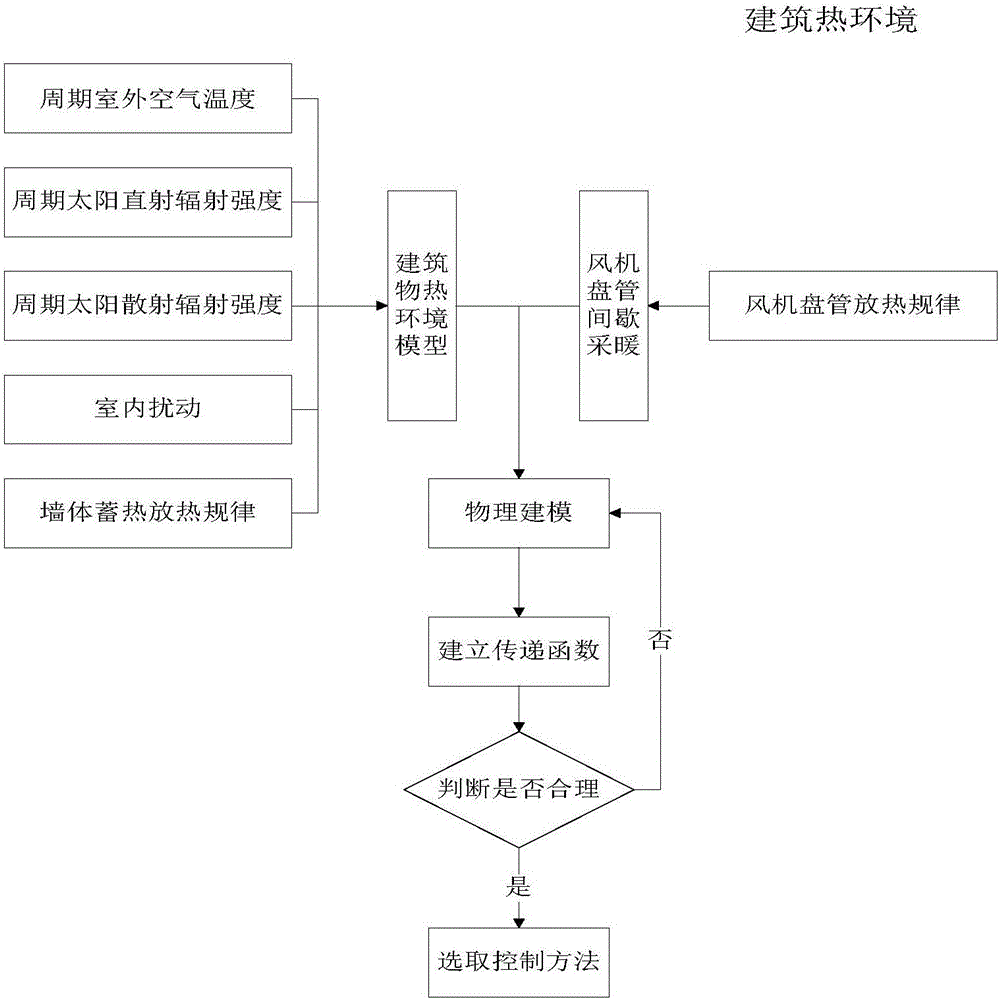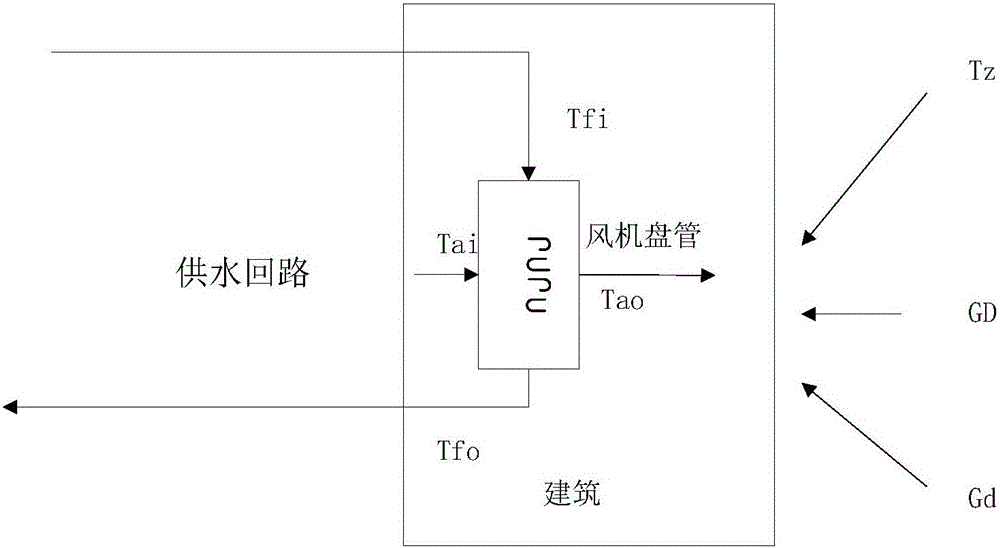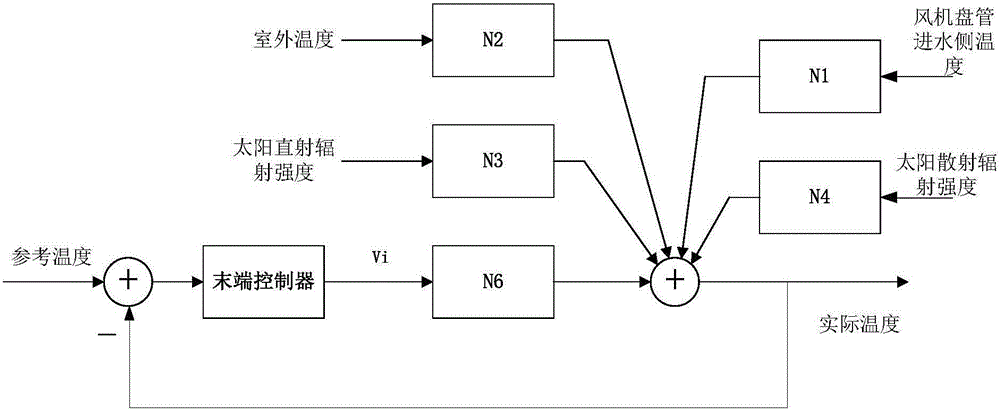Building thermal environment control modeling method based on physical properties
A technology of physical characteristics and modeling methods, applied in the field of building thermal environment control modeling, which can solve problems such as the influence of data volume and the lack of universality of control modeling methods.
- Summary
- Abstract
- Description
- Claims
- Application Information
AI Technical Summary
Problems solved by technology
Method used
Image
Examples
specific Embodiment
[0036] A specific example is as follows:
[0037] (1) Taking an experimental building with a length of 10m, a width of 4m, and a height of 3m as an example, the convective heat transfer coefficient of the building wall = 0.62J / m 2 S°C, air penetration La(n)=14.56m 3 / h, the average value of the transmittance of glass to direct solar radiation=0.7, the transmittance of glass to solar diffuse radiation=0.65, the average absorption rate of glass to solar direct radiation=0.13, the absorption rate of glass solar diffuse radiation= 0.1, the heat transfer resistance of the outer surface of the glass = 0.04m 2 ℃ / w, heat transfer resistance of glass inner surface = 0.13m 2 ℃ / w, full shading coefficient SC = 0.5, actual sunlight exposure area ratio = 0.32, window glass effective area coefficient = 0.7, window area F = 9.56m 2 .
[0038] (2) Taking a fan coil unit with copper fins as heat dissipation material as an example, the density of water = kg / m 3 , specific heat of water = 4...
PUM
 Login to View More
Login to View More Abstract
Description
Claims
Application Information
 Login to View More
Login to View More - R&D
- Intellectual Property
- Life Sciences
- Materials
- Tech Scout
- Unparalleled Data Quality
- Higher Quality Content
- 60% Fewer Hallucinations
Browse by: Latest US Patents, China's latest patents, Technical Efficacy Thesaurus, Application Domain, Technology Topic, Popular Technical Reports.
© 2025 PatSnap. All rights reserved.Legal|Privacy policy|Modern Slavery Act Transparency Statement|Sitemap|About US| Contact US: help@patsnap.com



